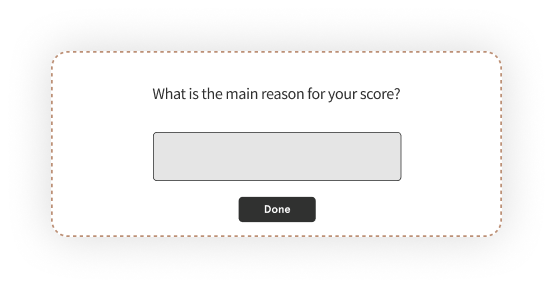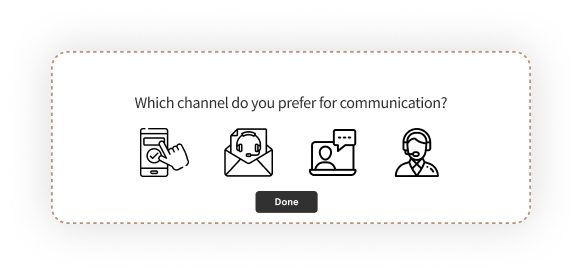Businesses seeking to gather usable data from their target audience would be best served by using surveys. That said, crafting an effective survey is more of an art than a science.
The survey length itself is something that often gets overlooked and hamper the response rate.
If the survey is too short, it won’t capture the subtleties of the customer base. If it’s too long, customers are more likely to abandon it halfway through. The key, then, is to strike the perfect balance between quality and brevity.
TL;DR
- Crafting effective surveys is an art that involves finding the ideal balance between quality and brevity. Research suggests that the sweet spot for survey length is 10-14 minutes, with a focus on 7-10 questions.
- While shorter surveys are ideal for quick submission, one can still make longer surveys engaging through techniques like mini questionnaires, enticing feedback survey questions, an easy-to-use interface, interactivity, and offering feedback or incentives.
- Survey fatigue is connected with human psychology where stretching a simple task beyond a certain limit turns their curiosity into frustration. Hence, finding the perfect length for your survey is critical to ensuring survey success.
- Enough emphasis cannot be given to testing the surveys. The best way to ensure you have reached the ideal survey length is by testing it on a smaller section of your target audience before sending it out on a larger scale.
- Finding the perfect length of the survey is all about striking a balance between the right survey questions, design, and a number of other survey strategies.
- Zonka Feedback offers both microsurveys and longer surveys with a variety of engaging graphics, Likert scales, star ratings, smiley face surveys, picture options, and other graphics to keep the users engaged throughout. You can schedule a demo to start creating your own surveys.
Create Amazing Surveys To Capture Feedback
With Zonka Feedback, create engaging and perfect-length surveys to measure customer experience and learn ways to delight them.

Quality Vs. Quantity: Finding the Ideal Survey Length
The mantra "quality over quantity" resounds with particular significance when it comes to survey design. It's not merely the act of bombarding participants with a multitude of questions that yields valuable insights; it's the artful construction of each query that transforms a survey into a powerful instrument of understanding.
Research on surveys reveals something very interesting. If a survey takes longer than 15 minutes to complete, the customer is very likely to abandon the survey halfway through. Even more interesting is that surveys that last less than 10 minutes aren’t optimal either.
To optimize your survey, you have to find a middle ground.
For most surveys, the perfect length is 10-14 minutes, with customers willing to answer 7-10 questions at a time. This “Goldilocks zone” of survey length is how you get the best feedback with the best completion rate.
Crafting In-Depth, Quality Questions
No survey is worthwhile if it doesn’t have quality questions. Good questions provide the detailed insights you need for your data to be instructive and usable. To prove your survey research methods successful, you must focus on question quality, even at the cost of the survey’s length, because this is how you get the best results.
So how do you craft high-quality questions? Here are a few tips:
- Keep them focused and specific. Each question should focus on one aspect or point, or you risk creating confusion or misinterpretation. Vague questions lead to vague answers that offer little value and lower the data quality.
- They must be relevant to the respondent. Questions in your online surveys should be relevant to the respondent’s experience. Irrelevant online survey questions can frustrate survey participants, making them more likely to abandon the survey. Irrelevant questions also increase the likelihood of bad answers and, thus, bad data.
- The wording must be clear and concise. Use clear and straightforward language. Ambiguous or complex words can make survey respondents lose interest.
- Ask open-ended questions. Include open-ended questions so that respondents can express their thoughts. These can provide some deep insights that a multiple-choice question would miss.

- But focus mostly on closed-ended questions. These questions are easier for participants to answer, giving you quantitative data from which you can draw real, actionable conclusions. For example, Weave’s recent online survey revealed that an average of 66.5% of millennials rely on online reviews before booking an appointment with a healthcare provider.
This precise, measurable result from closed-ended questions allowed them to conclude that medical care providers must focus on generating online reviews if they want to increase and retain their patient base.
How To Make Longer Surveys Appealing?
It’s true that a longer survey might appear intimidating to respondents, at least at first. That said, with a few techniques, you can still create engaging surveys:
1. Use Appropriate Questionnaire Length (Mini Questionnaires)
Break down a long survey into mini questionnaires to make it feel less overwhelming. Scrap the 20-minute survey, and offer four 5-minute surveys to keep the engagement high without sacrificing the information gathered.
2. Ask Enticing Questions
The nature of your questions can affect the amount of engagement you receive. Ask survey questions that make respondents recall interesting experiences.
This can make the survey more enjoyable and less intimidating.
Use a mix of simple, complex, and thought-provoking questions to keep your respondents engaged throughout the survey.
For instance, if you are creating customer satisfaction surveys, it is ideal to include different survey question types like complaint handling, experience rating, brand perception based on experience, reason for score, customer service questions, demographic questions, particular feature-related questions, and more.

3. Make Sure the Survey Is Easy To Use
The survey’s design and interface play a crucial role in user experience.
Ensure that your survey is intuitive and easy to navigate. If possible, use visual aids and interactive elements to enhance engagement.
You need to not just make your surveys more intuitive and interactive, but you also need to ensure that the surveys are sent to them on the right survey channels. You have to ensure which channel is ideal for sending what type of survey.
For instance, offline surveys can be ideal for capturing post-event feedback. Sending out an email survey, weeks after an event might not elicit the same response rate. Moreover, some of the respondents might not even be available by email, depleting the quality of survey data.
4. Keep Your Surveys Interactive
When we talk about survey length, we’re not just referring to the time it takes to complete. A survey filled with monotonous questions can seem longer and more tedious, making your respondents feel like it’s a longer survey. The solution is to make your survey interactive.
Adding interactive elements such as images, sliders, and videos can enhance user experience. You can also consider gathering all those materials together in one interactive PDF. The use of different question types like ranking, rating, or Likert scale questions can also add variety. Finally, consider the visual layout. If it’s not attractive and simple, it should be reworked.
Perform survey research and study your target audience to identify the best way to make the surveys more engaging. You can make them interactive and conversational for young participants. For professional, decision-making individuals, the questions be very crisp and to the point. All in all, your surveys should be based on the demographics and personas of the respondents.
5. Offer Feedback and Incentives
If your survey is long, giving timely feedback is a good way to increase engagement. When a respondent completes a section, give them a simple message acknowledging their progress. It never hurts to give a little encouragement, either.
Offering incentives can also increase survey participation and completion rates. Discounts or entries into a prize draw are all great ideas to get respondents to give good answers and complete your survey.
For instance, if users answered bug report form questions in your online surveys, it is important that you share the update with them once the bug is resolved.
Understanding Respondent Fatigue
When surveys become too long or complicated, respondents will grow tired and either abandon them or rush the answers and thus compromise the data. When that happens, you end up with lower-quality data and a lower completion rate.
However, understanding respondent fatigue isn’t just about tracking the time spent answering the survey questions. You must also consider the “cognitive load” for each question. Cognitive load means different question types require more thinking and brain energy than others.
For example, an open-ended question requires more cognitive effort than a simple yes/no question, which is why a balanced mix of question types is so important. Not only will it help to sustain engagement, but it will also help prevent respondent fatigue.
Decoding the Psychology of Survey Fatigue
Survey fatigue, deeply rooted in human psychology, is a critical consideration in data collection. Participants have limited attention and patience, and their willingness to engage diminishes as the length of the survey increases. Understanding this process is crucial for sustained engagement and data quality.
Psychological studies reveal a tipping point where curiosity turns into frustration, leading to cognitive strain and survey abandonment. Recognizing this tipping point is central to optimizing survey design for meaningful engagement and data quality.
An increase in survey length is one of the most crucial reasons behind survey fatigue. Shorter surveys tend to have a higher response rate compared to long surveys. These surveys take around one minute or so or if they have more questions, they do not let the interest of the respondents lose.
Test, Test, Test
You’ve landed upon the best survey research methods- you've created your survey, and you’ve got the ideal survey length, question quality, and engagement mechanisms completed. Now it’s time to test it.
Testing allows you to discover the time it takes to complete the survey but also how engaging and understandable it is from a respondent’s perspective.
Test your survey with a small audience first to gather feedback on the survey’s length, the questions asked, and the overall experience. Once this has been completed, you can roll out the survey to a wider audience with all of the insights you gained from the first test audience.
Conclusion
There isn’t a one-size-fits-all approach to the perfect survey. What works for one business may not work for another. You will likely have to play with different metrics until you find the perfect fit for your audience.
Creating an effective survey is an art. It requires careful balancing of various factors, including survey length, question quality, design, and respondent engagement. Achieving this balance isn’t impossible.
With careful planning and testing, you can create a survey that provides valuable insights while respecting your respondents’ time and effort. A well-crafted survey can be a goldmine of insights that helps you understand your target audience.
Keep these guidelines in mind while you go forth to create your surveys. And remember, the ultimate goal in business is not just to get answers but to better understand your customers and build long-term relationships with them. With this perspective, you are sure to create surveys that hit the sweet spot.
You can also switch to a survey software like Zonka Feedback to create ideal surveys that are completely customized to meet your target audience where they are.
To explore the tool and learn how to create a survey, schedule a demo with our team.


.png)
.jpg)






.jpg)